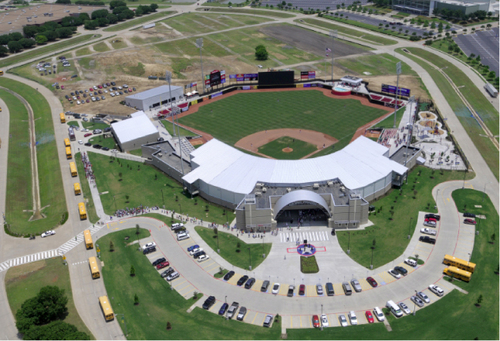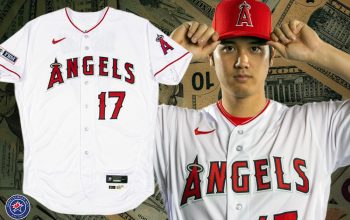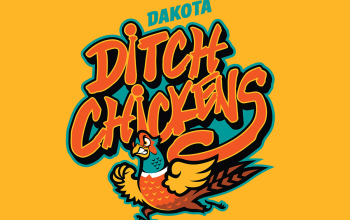When the Grand Prairie AirHogs debuted on May 8, 2008, against the Saint Paul Saints, their unusual name warranted an explanation in the game’s media notes. The AirHogs, a brand-new independent franchise based in the Dallas/Fort Worth area, were visiting Minnesota to take on one of the American Association’s classic teams, the Saints, who were established in 1993.
The game notes read, “Fans coming to the ballpark for the first time may ask themselves, just what is an AirHog? It is a lot more than a pig with a slick pair of old school pilot goggles.”
The answer to the question What is an AirHog? is summed up by the team’s public relations manager Lauren Mannion. “As far as AirHogs,” she said, “it’s a slang term for military pilots during World War II.”
The book “War Slang: American Fighting Words & Phrases Since the Civil War,” by Paul Dickson, goes a little further, defining the term as “one who flies at every opportunity.”
 Flipping back to those media notes from 2008, we learn this about those World War II AirHogs: “When they went up in the sky they said they wanted to hog the air and the name was born. This ties directly into the aviation background of the communities past and present.”
Flipping back to those media notes from 2008, we learn this about those World War II AirHogs: “When they went up in the sky they said they wanted to hog the air and the name was born. This ties directly into the aviation background of the communities past and present.”
So what do World War II pilots have to do with the town of Grand Prairie, Texas? In a general way, the town has a lot of history with aviation and defense. In a very specific way, World War II planes, the Consolidated B-24 Liberator (at right) and the P-51 Mustang (above), were built at a North American Aviation plant in the town.
The connection to aviation and defense in Grand Prairie continues today, with facilities for Lockheed Martin, Vought Aircraft, and Airbus Helicopters located in the city, and the American Airlines C.R. Smith Museum just down the road in Fort Worth.
“AirHogs was chosen because it complemented the stadium’s aviation inspired architecture and the local aeronautical industry,” said Mark Schuster, managing partner of the team’s original owners, Ventura Sports Group, back in 2008. “In the same manner that Air Squadrons have unique recognizable nicknames, AirHogs will represent our team, organization and community.”
Eight years later, as the AirHogs get the 2016 season underway, the team has changed owners, but those words still ring true. “A lot of people in the Dallas/Fort Worth area have had family that have worked with these aviation corporations or they were former pilots,” Mannion said. “I think it’s a great logo. It’s representative of this city. People resonate with it.”
The logo itself, designed by More Branding+Communication, based in Tulsa, Oklahoma, takes the figurative hog and makes it literal, and it gives new meaning to the phrase, “If a pig had wings….” (In case you see, as I do, a resemblance between this logo and the Triple-A Lehigh Valley IronPigs, consider it a case of convergent evolution. The AirHogs and the IronPigs both debuted in 2008 and their logos were designed by different firms. It’s safe to say that both of these logos were in the works for a long time before they knew about each other.)

In the sports-rich Dallas/Fort Worth area, which has the Major League Texas Rangers and the Double-A Frisco RoughRiders (and a ton of teams in sports other than baseball), the independent AirHogs rely on a unique identity to stand out in the crowd.
 “I think it sets us apart,” Mannion said. “When you see the AirHogs, that’s not something you see every day…. You’re not going to see our logo everywhere. We feel that it’s unique. It’s attention grabbing. If you don’t know what it is, you’re going to want to figure out what it is.”
“I think it sets us apart,” Mannion said. “When you see the AirHogs, that’s not something you see every day…. You’re not going to see our logo everywhere. We feel that it’s unique. It’s attention grabbing. If you don’t know what it is, you’re going to want to figure out what it is.”
If you look at the American Association standings today, you will notice that the South Division includes a team called the Texas AirHogs—not the Grand Prairie AirHogs. The reason for the temporary change is that the American Association has had 13 teams for two seasons, and it’s a widely accepted fact that you need an even number of teams to play baseball.
 Last year, they played interleague games with teams from the Can-Am League to even out their numbers, but that arrangement ended for 2016. Since the owners of the AirHogs own another team in the American Association, the Amarillo Thunderheads, the league approached the Grand Prairie AirHogs with a proposal.
Last year, they played interleague games with teams from the Can-Am League to even out their numbers, but that arrangement ended for 2016. Since the owners of the AirHogs own another team in the American Association, the Amarillo Thunderheads, the league approached the Grand Prairie AirHogs with a proposal.
“What they’ve asked is just for this season, the 2016 season, if ownership would combine its two teams to accommodate the league so that there would be an even amount of teams within the league for league play,” Mannion said. “Next season, operations will go back. Amarillo will be back to being the Amarillo Thunderheads and Grand Prairie will be the Grand Prairie AirHogs.”
And why did they choose to unite under the moniker AirHogs instead of Thunderheads? “Amarillo has that military influence and also aviation,” Mannion said, “so it’s still representative of both areas.” (The unified team will play half of its games in Grand Prairie, and half in Amarillo.)
The AirHogs are yet another example of a small minor league baseball team with a big story. Superficially, the logo is fun and quirky, but dig a little deeper and you find that the connections to the local community and a small town’s history make it that much more meaningful.















